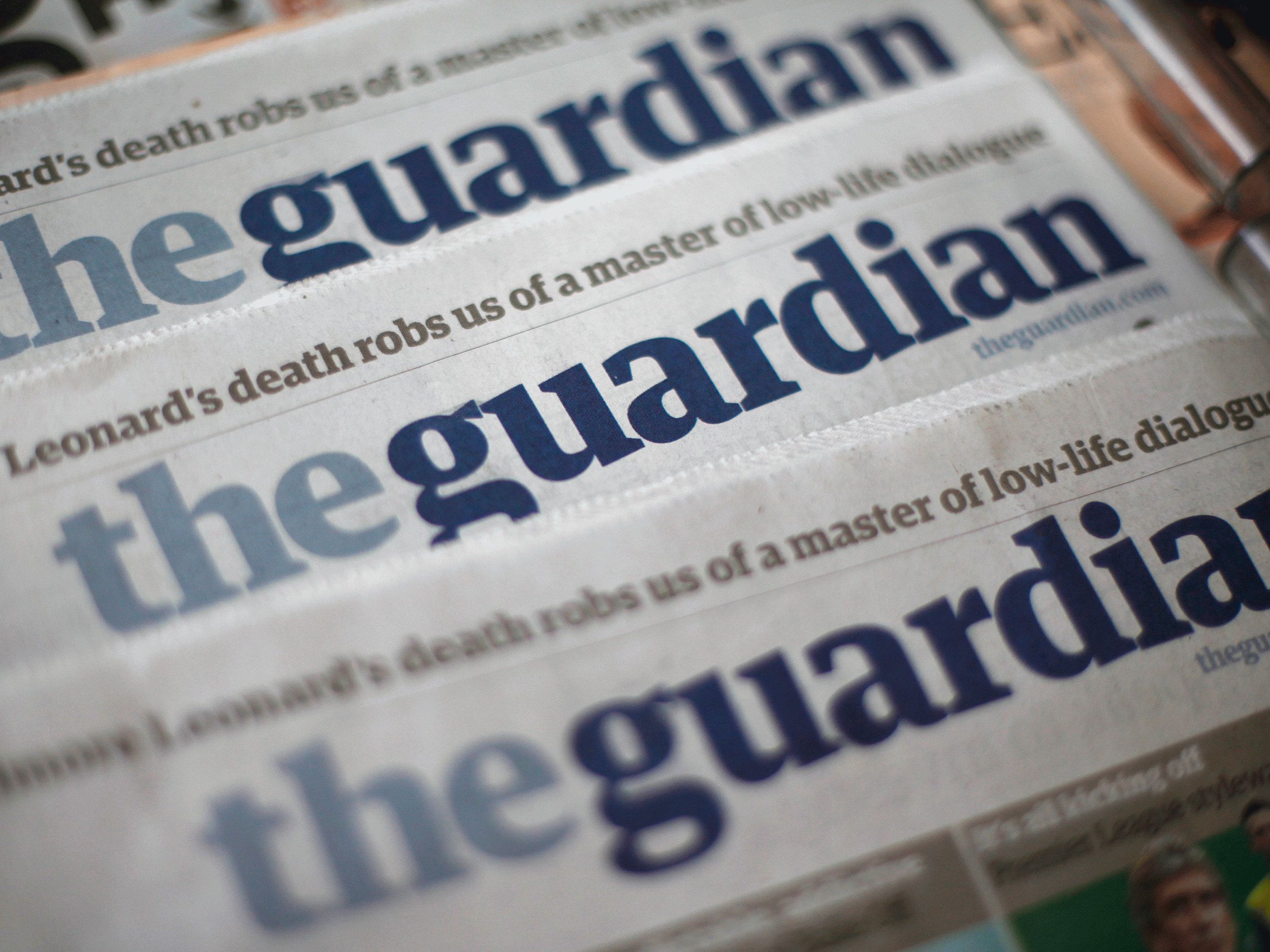Guardian and Observer confirm tabloid format change
Newspaper announces publisher Trinity Mirror will print the titles from early 2018

Your support helps us to tell the story
From reproductive rights to climate change to Big Tech, The Independent is on the ground when the story is developing. Whether it's investigating the financials of Elon Musk's pro-Trump PAC or producing our latest documentary, 'The A Word', which shines a light on the American women fighting for reproductive rights, we know how important it is to parse out the facts from the messaging.
At such a critical moment in US history, we need reporters on the ground. Your donation allows us to keep sending journalists to speak to both sides of the story.
The Independent is trusted by Americans across the entire political spectrum. And unlike many other quality news outlets, we choose not to lock Americans out of our reporting and analysis with paywalls. We believe quality journalism should be available to everyone, paid for by those who can afford it.
Your support makes all the difference.The Guardian and The Observer will relaunch in tabloid formats next year, after their publisher signed a contract to outsource printing as part of a three-year plan to break even in their finances.
Publisher Guardian Media Group (GMG), the parent company of the two titles, said in 2016 that it would need to save 20 per cent to counter underlying losses that widened to £62.6 million last year and that it was aiming to break even in three years.
Now the company has announced that Trinity Mirror, publisher of the Daily Mirror, Sunday Mirror and Sunday People, will print the titles from early 2018.
The move will see three £80 million printing presses in London and Manchester sold or scrapped, in a move set to affect about 50 jobs.
It follows sharp falls in the print advertising market and the rising cost of publishing newspapers as consumers move towards digital media, which has been exacerbated by a slowing in digital revenue generation as Google and Facebook reap the benefits of online advertising market.
Following the announcement, David Pemsel, the chief executive of GMG, said: “This is an important step in our three-year transformation plan.
"More people are reading and supporting our journalism than ever before, but the print industry continues to evolve, and we must evolve with it. We plan to continue the Guardian’s record of producing bold, brilliantly designed award-winning journalism.”
Katharine Viner, editor-in-chief of The Guardian, said the switch to a “new-look tabloid” Guardian and Observer would be “bold, striking and beautiful”, and expressed her belief that readers value the journalism as opposed to the “shape or the size” of the titles.
“The Berliner is a beautiful format which has served our readers brilliantly for 12 years but we know that it is our award-winning, quality, independent journalism that our readers value most, rather than the shape or the size of the newspapers,” said Ms Viner.
“We are going to create a new-look tabloid Guardian and Observer that are bold, striking and beautiful – and which still contain the agenda-setting journalism for which we’re renowned.”
Since the The Guardian changed to a Berliner format in 2005, average circulation has fallen from 341,000 in April 2005 to 154,000 in the same month of 2017.
Join our commenting forum
Join thought-provoking conversations, follow other Independent readers and see their replies
Comments